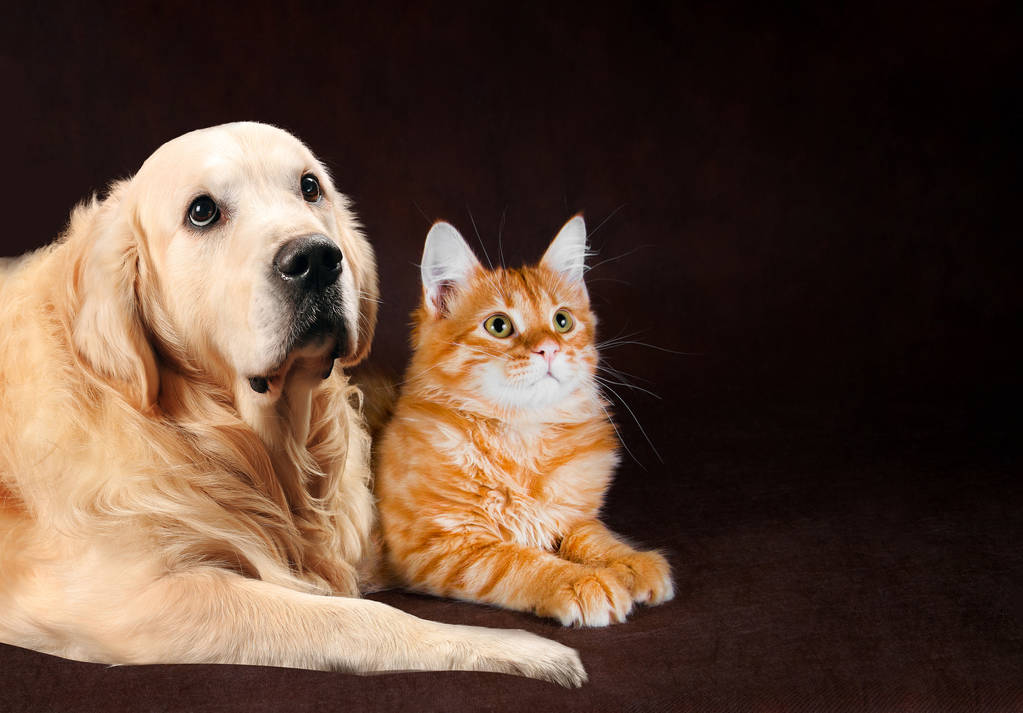The negative ecological balance of air and car travel as well as meat consumption is well known. But dogs and cats also have a significant impact on the carbon footprint of their owners.

What does carbon footprint mean?
Global warming should be limited to 1.5 degrees Celsius
Binding target values for the emission of greenhouse gases, which are primarily responsible for global warming, were laid down for the first time in the Kyoto Protocol on December 11, 1997. In addition to CO2, other greenhouse gases are listed here, such as methane (CH4), nitrous oxide (N2O), sulfur hexafluoride (SF6), hydrofluorocarbons (HFC), perfluorocarbons (PFCs) and nitrogen trifluoride (NF3). Since the Kyoto Protocol expired in 2020, a new climate protection agreement was introduced in order to be able to continue pursuing the international climate protection process after 2020. In 2015, at the 21st UN Climate Change Conference in Paris, 196 countries agreed to limit global warming to well below 2 degrees Celsius — if possible below 1.5 degrees Celsius. In November 2002 the Glasgow Climate Conference (COP 26) took place and ended with the Glasgow Climate Pact. Here the 1.5 °C target was again emphasized and for the first time reference was made to phasing out unrestricted coal-fired power generation and to the abolition of inefficient subsidies for fossil fuels.
What is the carbon footprint?
The carbon footprint indicates the amount of greenhouse gases released by a specific activity, process or action. This means that every product also has a CO2 footprint, which is made up of the sum of emissions that come together through manufacture, use, recycling and disposal. But the CO2 emissions can also be determined for activities such as air travel, car trips, hotel accommodation or events. The carbon footprint accounts for about 60% of the ecological footprint. This indicates how sustainably a person, a company or a country deals with global resources. According to Welthungerhilfe, the world’s population would need 1.7 earths to cover the need for resources. Earth Overshoot Day, the annual deadline when all ecological resources of a year are used up, was already reached on July 27th in 2021.
Calculate your own carbon footprint
The World Wide Fund For Nature (WWF) provides a carbon footprint calculator on its website that you can use to calculate your personal carbon footprint. The Federal Environment Agency also offers a CO2 quick check, which also takes pet ownership into account, among other things. Questions about the following areas of life are asked here:
Your shopping behavior for fruits, vegetables, dairy products, eggs, meat and fish
The proportion of organic or fair trade products you consume
How often you throw away food
How many car trips, plane trips and cruises you take and how often you use public transport.
What type of heating and water heating you use in your house or apartment
The standard and size of your house or apartment
How many people live in the household
Which energy efficiency class your household appliances have and how many small appliances you own
The type and frequency of laundry washing and drying
The money spent on clothes and shoes, leisure, consumer electronics, furniture, restaurant visits, overnight stays away from home, consumer goods and pets.
Why do pets also have a carbon footprint?
So far, there are only a few studies that look at the environmental impact of a dog or cat’s life. In 2020, the Technical University (TU) Berlin examined the entire life cycle of a dog in this regard and identified food, urine and faeces in particular as the main influencing factors. The environmental impact increases with the size, weight and lifespan of the dog. Animal and plant life are negatively affected by urine and the feces of the fur friends can make the trees more susceptible to diseases. For a dog weighing 15 kilograms that lives for 13 years, an average of 1000 kg of faeces and almost 200 liters of urine could be determined. With regard to dog food, the greatest burden was caused by the high proportion of beef and poultry and the packaging materials.
Are there too many dogs and cats?
Many pet owners may wonder why their beloved four-legged friend causes so much CO2. It is not only the CO2 emissions of a single animal that is decisive, but the large number of pets. According to the Federal Environment Agency, the number of dogs in Germany has more than doubled within 20 years. In addition, the Industry Association for Pet Supplies (IVH e.V.) states that 15.7 million cats and 10.7 million dogs lived in Germany in 2020, the number of which has most likely increased further in the course of the pandemic. 47% of all households had at least one pet. Justifications that dogs ensure more exercise for their owners and can encourage children to take more responsibility should not be included in the considerations.
The feed has the most harmful effect on the climate
Dog and cat food is largely based on meat and meat by-products. According to a report by Galileo TV, which documents a long-term experiment with vegan dog food in cooperation with the University of Veterinary Medicine Hanover, meat-based dog food accounts for 90% of a dog’s carbon footprint. Around 1 million tons of meat are consumed annually for the 26 million dogs and cats in Germany. It would theoretically be possible to feed dogs on a purely plant-based basis, as Volker Wilke from the University of Veterinary Medicine Hannover explains in the article. This would reduce CO2 emissions for wet food by 35% and for dry food by as much as 70%. So far, no adverse effects have been observed with feed made from peas, lentils, sweet potatoes or soya supplemented with vitamins and amino acids. However, the changeover should be carried out under expert supervision so that the dogs do not suffer any organ damage or muscle atrophy. However, the origin of the vegan feed is also important. Because if the feed is made with soy from Brazil or other countries of origin, it can be much more harmful to the climate than dry feed made in this country.
What is the life cycle assessment of dogs, cats and horses?
With the provocative book title “Time to eat the dog?” (Is It Time to Eat the Dog?), two New Zealand authors caught the attention of many pet owners in 2009. Is the ecological paw print really that bad?
No more than 2 tons of CO2 per year
According to the Intergovernmental Panel on Climate Change (IPCC), every inhabitant of the earth should not cause more than two tons of CO2 per year, so that the climate would not be further burdened. The amount of two tons of CO2 corresponds to the capacity that the earth could absorb naturally. The actual values significantly exceed these two tons, depending on the country. According to Statista, in 2019 an average of around 30.68 tons of CO2 was produced per capita in Qatar, around 14 tons in the USA and around 7.8 tons in Germany.
What is the carbon footprint of dogs and cats?
Researchers at the Technical University (TU) Berlin have examined the life cycle assessment of dogs. Among other things, the production of feed and the consequential damage to the environment caused by urine and faeces were included. The result shows that the popular pet causes significant amounts of CO2. For example, a dog weighing 30 kilograms produces around 1,050 kilograms of CO2 a year, as reported by the Tagesspiegel. Thus, with just over a tonne of CO2, this dog causes about the same amount as a one-way flight from Berlin to Washington. With an estimated lifespan of 18 years, the dog’s CO2 emissions would increase to 19 tons.
The life cycle assessment for cats was determined in 2019 by the Swiss eco-balance institute ESU-Services. In addition to feed and environmental pollution, domestic conditions such as heat loss when installing a heat flap were also taken into account. According to this, a cat weighing 4.2 kilograms produces about the same amount of CO2 per year as a 1,165-kilometer car journey, which roughly corresponds to the distance from Berlin to Venice.
Horses are climate sinners too
A study examined all important effects on the life cycle assessment of pets. This included, for example, feeding, housing, faeces, trips by car to the veterinarian or even going for a walk, as well as all necessary purchases for the pets. The authors compared the results with the environmental impact of a car trip. The results showed that horses had the worst environmental record. According to the calculations, the annual cost of keeping a horse corresponded to an annual car mileage of 3700 km. Overall, the scientists came to the conclusion that the larger the pet, the greater the environmental impact.
This is how you can optimize your pet’s carbon footprint
Remove legacies left by four-legged friends
Dogs defecate and urinate when they go for a walk. A researcher determined in 2017 that the dogs and cats kept in the USA alone produce a good five million feces a year. It is not possible to get rid of the urine, but you should collect the dog poop in a waste bag and dispose of it. Thus, the environment is less polluted, because the amounts of phosphorus, nitrogen and heavy metals contained in the feces contribute to freshwater eutrophication and freshwater poisoning. In addition, disposal companies have to collect less manure, which also saves CO2. Also against the background that the production of the manure collection bags is less harmful to the environment than the entry of manure into nature. At the same time, walkers are happy when they are spared stepping into a dog pile.
Adjust the amount of feed as needed
Since many pets are overweight, CO2 can certainly also be saved with regard to the amount of feed. Keep your pet at a healthy weight and avoid overfeeding. As a dog owner, you should also consider that the production of dog food also requires factory farming, because dog food rarely comes from organic farms.
Reconsider BARF feeding
Biologically appropriate raw feeding, or BARF for short, contains 75% high-quality raw meat and is therefore a much more climate-damaging form of feeding than ordinary wet food. This doubles the CO2 footprint. The BARF feeding is considered to be particularly adapted to the needs of the dog as a descendant of the wolf. In the meantime, however, the opinion is becoming more and more widespread that dogs have adapted their digestive system to carbohydrate-rich food in the course of their development and that such a high protein intake is therefore no longer absolutely necessary.
A simple calculation illustrates the dimensions: A meat ration of around 300 – 500 grams per day is recommended for a medium-sized dog weighing 30 kg. This adds up to 150 – 185 kilograms per year over the year – per dog. And this does not include meat consumption for cats.
Insect-based dog food as an alternative
The latest trends include food cans that contain insects as a protein source. Insect food producer Tenetrio reports that insect protein-based dog food contains all the amino acids that dogs need. In addition, dogs are very good at splitting and utilizing the insect protein. A study that examined compound feed containing larvae of the black soldier fly came to the conclusion that the feed was very well tolerated by the dogs even if they suddenly switched. However, the price here is still far higher than for dog food containing meat, which is due to the high production costs.
Vegan dog food possible, but expensive
Feeding a dog meat-free sounds strange at first. It is also not in line with a dog’s natural diet and requires some additives to keep the dog from becoming ill. In fact, it is possible to provide the dog with all the nutrients, even if no animal protein is included. Vegan dog food consists of vegetable protein in the form of legumes such as lentils or lupins, supplemented with vegetables, millet, taurine, L-carnitine, iron, minerals, vitamins or algae. The disadvantage, however, is that the price is currently three times higher than that of conventional dog food. In addition, the current study situation does not yet allow an unrestricted recommendation for special phases of the dog’s life, such as growth or age.

Cats are more difficult to change their food
So far, there are hardly any studies that have examined the effects of vegan diets in cats. The option remains to choose a feed that contains more animal by-products or to offer more dry feed.
Conclusion: Every hobby entails a certain amount of CO2 emissions. Whether it’s a pet or the sports car in front of the front door. Here you have to decide for yourself where you see savings potential. Several pets, a lot of air travel, high meat consumption and cars with high fuel consumption are perhaps too much of a good thing. If you keep a dog as a pet, you can reduce your dog’s CO2 footprint by consistently collecting the droppings in poop bags and by changing the diet.

